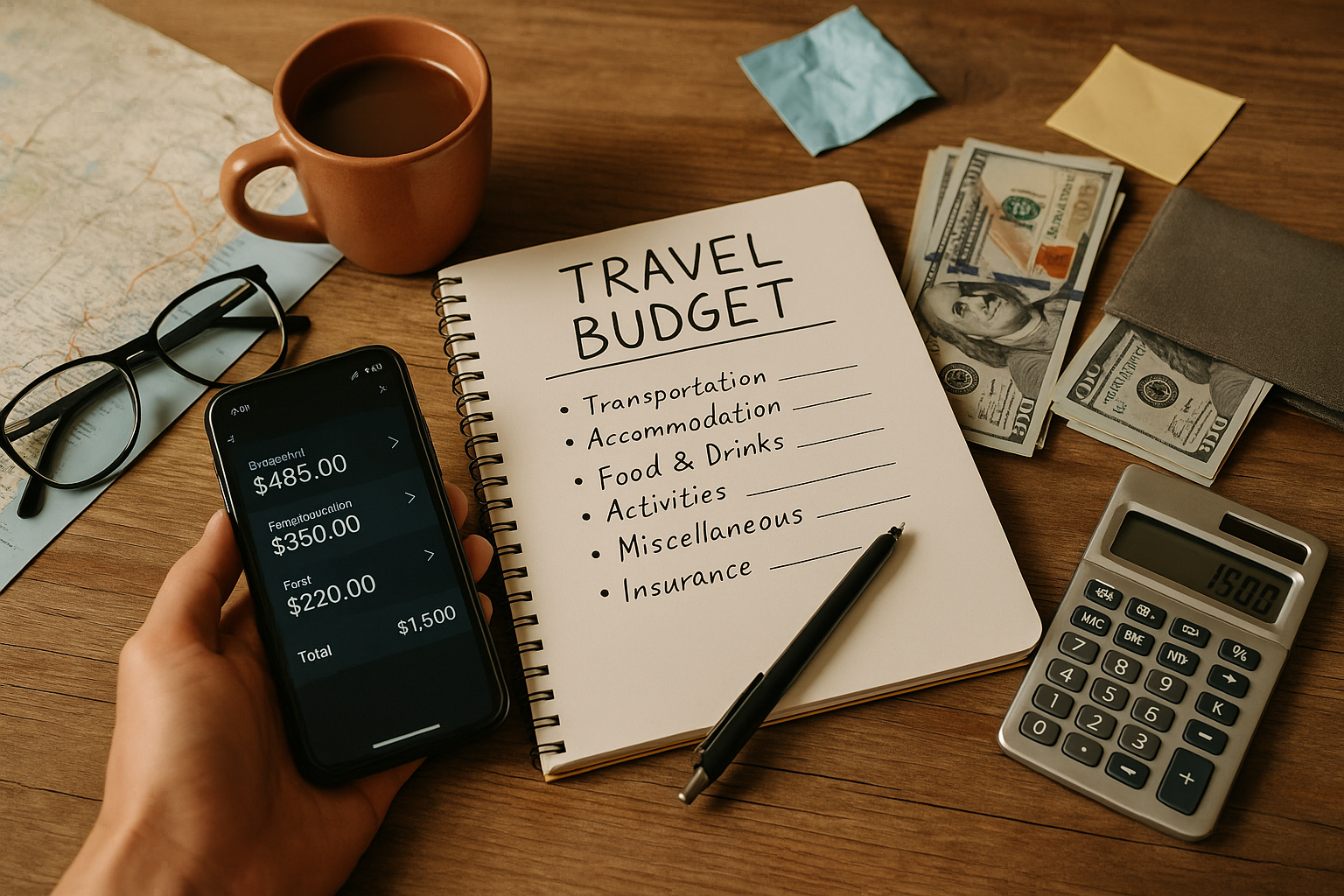Whether you’re planning a weekend escape or a month-long adventure, budgeting for your trip is essential. A well-planned travel budget gives you the freedom to enjoy the experience without financial stress or surprises along the way.
This article walks you through how to create a realistic travel budget and stick to it—from saving before you go to managing expenses during your trip. With smart planning, you can travel more often and more confidently.
Why Travel Budgeting Matters
Creating a travel budget isn’t about restricting your fun—it’s about making informed choices that allow for financial freedom and peace of mind.
Benefits of budgeting:
- Helps you avoid overspending and debt
- Lets you plan and save with intention
- Makes it easier to prioritize experiences
- Builds confidence to travel more often
Travel becomes more enjoyable when money worries don’t follow you around.
Step 1: Know Your Total Travel Budget
Start with the big picture. How much can you afford to spend without sacrificing financial stability?
Questions to ask:
- How much have I saved or can I save before the trip?
- Do I want to pay everything upfront, or leave room for flexibility?
- Will I use cash, credit, or a mix of both?
- Do I have an emergency fund set aside?
Once you have your total number (e.g., $1,500 for 5 days), you can start breaking it down.
Step 2: Break It Down into Categories
Dividing your budget into key categories helps you understand where your money will go—and where you can adjust.
Common travel budget categories:
- Transportation
- Flights, trains, buses
- Airport transfers or taxis
- Fuel or car rentals
- Accommodation
- Hotels, hostels, Airbnb
- Fees, taxes, cleaning charges
- Food & Drinks
- Restaurants, groceries, snacks
- Coffee shops or nightlife
- Activities & Tours
- Museums, excursions, guided tours
- Equipment rentals, entrance fees
- Miscellaneous
- Souvenirs, SIM cards, toiletries
- Tips and service charges
- Travel Insurance & Emergency Fund
- Optional but strongly recommended
You can use a spreadsheet or budgeting app to track and update each category.
Step 3: Do Research and Estimate Costs
Now that you have categories, start filling them with realistic numbers based on your destination.
Where to find estimates:
- Flight comparison sites (Google Flights, Skyscanner)
- Hotel booking platforms (Booking.com, Airbnb)
- TripAdvisor or Google Maps for restaurant pricing
- Local blogs and YouTube for activity costs
- Reddit travel communities for real traveler insights
Plan conservatively—round up your estimates rather than down.
Step 4: Prioritize What Matters Most
Every traveler is different. Some love food, others love luxury hotels, and some care only about adventure. Use your budget to reflect your values.
What to ask yourself:
- Which experiences are non-negotiable for me?
- Where am I okay cutting back?
- Can I swap luxury for savings without losing the fun?
Example: Splurge on a skydiving experience and save by staying in a budget guesthouse.
Step 5: Plan for Daily Spending
Once your big costs are covered, calculate your daily spending allowance.
How to figure it out:
- Add up fixed costs (flight, hotel, major activities)
- Subtract from your total budget
- Divide the remaining amount by the number of travel days
Example:
Total budget: $1,500
Fixed costs: $1,000
Remaining: $500 ÷ 5 days = $100/day for food, fun, and extras
Stick to this daily cap to stay on track.
Step 6: Use Tools to Stay on Budget
There are plenty of free and paid tools to help you track your spending before and during your trip.
Popular travel budgeting tools:
- Trail Wallet – easy expense tracker (iOS)
- TravelSpend – track spending by category and currency
- Splitwise – great for trips with friends
- Spreadsheets – if you prefer custom tracking
Update daily to stay aware of your spending and adjust if needed.
Step 7: Save Before You Go
Once you know how much you need, set up a savings plan to reach your goal.
Saving tips:
- Set up a separate travel savings account
- Use automatic transfers every week/month
- Cut back temporarily on small expenses (coffee, takeout, subscriptions)
- Sell unused items online or freelance for extra income
- Use cashback/rewards programs or travel hacking with credit cards (responsibly)
Make travel savings part of your lifestyle—not just a one-time effort.
Step 8: Track Your Spending While Traveling
This is where many people go off the rails. Keep an eye on your spending throughout the trip.
How to track in real-time:
- Use your preferred budget app
- Save receipts or snap quick photos of bills
- Review your budget each night before bed
- Adjust the next day’s plans if needed
If you overspend one day, cut back the next to stay balanced.
Step 9: Prepare for the Unexpected
Even the best plans can hit a bump. Always build some buffer room into your budget.
Examples of unexpected costs:
- Last-minute transportation
- Lost/damaged items
- Medical or dental expenses
- Changes in exchange rates
- Extra baggage or visa fees
Having a small emergency fund ($50–$200) can save your trip from stress.
Final Thoughts: Budgeting Is the Key to Travel Freedom
A great trip doesn’t have to be expensive—but it does need to be intentional. Budgeting allows you to enjoy the moment, focus on experiences, and return home with memories—not debt.
So take the time to plan your budget, stick to it, and travel confidently. The world is out there, and your finances don’t have to hold you back.
